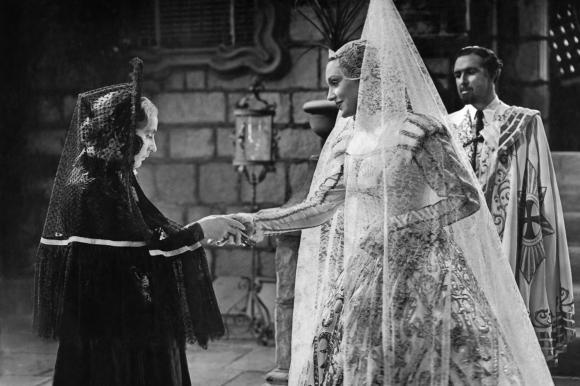

Between December 23 - January 6, The Film Society of Lincoln Center will present Imitations of Life: The Films of Douglas Sirk, one of the biggest retrospectives of the German filmmaker’s work seen in New York City. While the series, curated by Dennis Lim and Dan Sullivan, will feature some of Sirk’s best known titles like Imitation of Life, Magnificent Obsession and All That Heaven Allows, it will also introduce, or re-familiarize audiences to some of his most obscure works, such as Captain Lightfoot which stars Sirk favorite Rock Hudson as the title Irish hero, or A Scandal in Paris, which saw George Sanders play a real life 18th century criminologist, who started out as a thief.
Two of the most peculiar titles in the retrospective were screened for press in early December, one of them was La Habanera, a 1937 film directed by “Detlev Sierck” (Sirk would change his professional name until he arrived in Hollywood in the early 1940s) and written by Gerhard Menzel, a fierce Nazi supporter who went on to write some of the most horrific anti-Jew propaganda of all time. La Habanera is filled with racists remarks, ethnic generalizations, and the overall notion that anyone non-white was the equivalent of “a howling monkey”. Set in the isle of “Porto Rico” the film stars Zarah Leander as Astrée Sternhjelm, a rebellious Swedish singer who falls in love with singer Don Pedro de Avila (Ferdinand Marian) only to learn that passion dies, but love for country remains, as she craves the snow of her home, over the hell of the tropics.

Leander, who was Germany’s response to Greta Garbo, commands the screen in a sensuous, capricious performance that sees her suffer and/or swoon from scene to scene. She’s absolutely rapturous, a scene where she explains to her little son that snow are the tears of angels pitying the pettiness of humans is all the more exuberant, because her eyelashes seem to go for miles! The film was meant to remind German ex-pats, of the perils that lurked abroad - a strange Porto Rican fever puts people into instant comas that kills them shortly after. The film might be seen with, rightful, disdain by modern audiences who simply “know better” than to assume all of Latin America is the same, but the film reveals the DNA of what would become Sirkian melodrama at its most sublime.
Practically across the spectrum is Hitler’s Madman, one of Sirk’s first Hollywood films which represents the antithesis of La Habanera, in that it highlights the evils of Nazism and invited people to fight against them. John Carradine chews and swallows everything across his path as the demonic Reinhard Heydrich, a Nazi General who was assassinated in Czechoslovakia, leading to a German reprisal that consisted of the complete destruction of the township of Lidice. Shocking for its use of body horror and unflinching pessimism (a young woman jumps to her death from a building, rather than agreeing to serve the Nazis), Hitler’s Madman, is a chilling example of the power of artful propaganda. The call to action in the last scene is absolutely haunting.